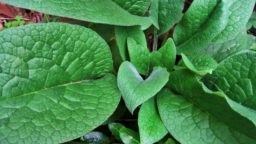Even with modern science, many home remedies are even more effective than their commercial alternatives. If you prefer to save the commercial remedies for more severe symptoms, learning some simple home remedies will make you feel better while they make your family feel better.
Whether you choose to cultivate them in your garden or forage for them, medicinal plants and oils have been successfully used for millennia. In fact, some of them have been used as far back as ancient Egyptian times.
Marsh Mallow
Treats inflammations and irritations of the respiratory mucous membranes and urinary membranes. On the outside, you can apply it to bruises, aching muscles, insect bites, splinters, and sprains.
Aloe Vera
Well known for its ability to relieve skin irritations like burns and sunburns as well as cuts and other inflammation, Aloe Vera sap can also be ingested to help with digestive problems, chronic constipation, and ulcerative colitis.
Pot Marigold
On the outside, you can use pot marigold for bites, stings, sore eyes, and sprains. On the inside, it can treat chronic infection and fevers.
Chamomile
In addition to being great for stress relief and helping you sleep, it can also be used for toothaches, earaches, and neuralgia.
Free Report: What the Heck is CBD?
Chinese Yam
This sweet tasting option is great for calming your stomach, as well as counteracts tiredness, helps with weight loss, poor digestion, asthma, and even emotional issues. Used as a balm, it can treat skin ulcers, abscesses and boils.
Echinacea
We could have a home remedy list without including this immune booster. In addition to helping you fight off whatever bug is making its way around the office, it can also be used topically for stings and bites.
Siberian Ginseng
Use this herb as a preventative measure for, well, almost everything. Its properties can be used to help:
- Angina
- Anti-Inflammatory
- Geriatric Debility
- High Cholesterol
- Improves Memory
- Increases Endurance
- Insomnia
- Menopausal Problems
- Mental Stress
- Physical Stress
- Bone Marrow Suppression (due to radiation and chemotherapy)
Related Article: 5 Natural Medicines You Are Unaware of
Tea Tree Essential Oil
Look at any label for a natural remedy; there is a good chance one of the ingredients listed will be tea tree oil. Nicknamed the “medicine cabinet in a bottle,” it can be used dozens of ways. We’ve narrowed the list down to just over sixty, but there are many more. If you can only keep one thing handy in your first aid kit, this would be your one. So, without further ado, away we go, you can use tea tree oil for:
- Abrasions
- Acne
- Allergies
- Arthritis
- Asthma
- Athletes Foot
- Bacterial Infections
- Bad Breath
- Bladder Infection
- Blisters
- Boils
- Bronchitis
- Bruises
- Bunions
- Burns
- Calluses/Corns
- Canker Sores
- Carbuncles
- Chapped Lips
- Chicken Pox
- Insect Bites
- Cold Sores
- Coughs
- Dandruff
- Dermatitis
- Dry Skin
- Eczema
- Emphysema
- Fungus
- Gout
- Gum Disease
- Hives
- Homemade Mouthwash
- Immune System Booting
- Inflammation
- Insect Repellant
- Jock Itch
- Laryngitis
- Muscle Aches/Pains
- Nail Fungus
- Psoriasis
- Rashes
- Rheumatism
- Ringworm
- Rubella
- Scabies
- Sciatica
- Seborrhea
- Shingles
- Shock
- Sinusitis
- Sore Muscles
- Sore Throat
- Staph Infection
- Sunburn
- Thrush
- Tonsillitis
- Vaginal Infection
- Viral Infections
- Warts
Final Words…
Keep in mind that the information above should not take the place of advice from a doctor, especially for serious illnesses or infection. Additionally, some natural remedies can have adverse reactions if mixed with prescription or over the counter meds. If you are thinking of starting a supplement or are taking a prescription, check with your doctor to see what you should avoid preventing any harmful side effects.



